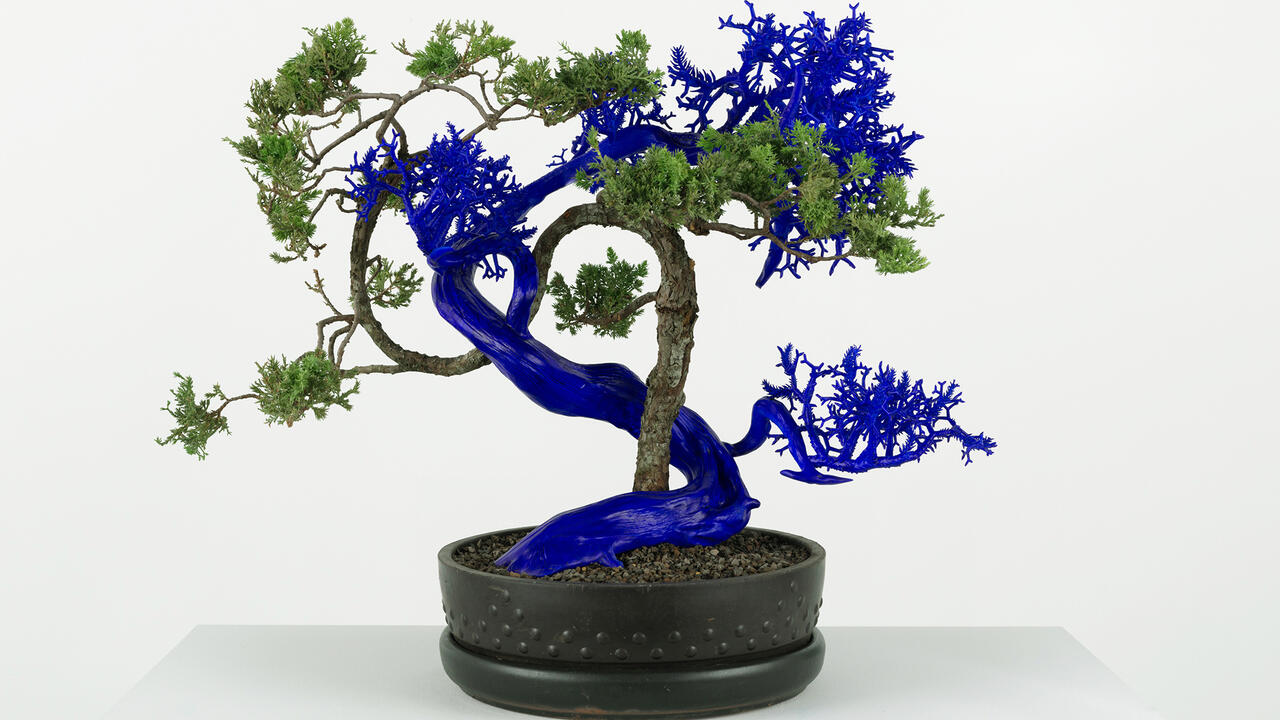Condo New York
Various venues, New York, USA
Various venues, New York, USA

Galleries come and go, but these days the going has begun to feel like an omen. Half a dozen top-notch spaces have closed over the past year in New York alone, where skyrocketing rents pinch profits. Enter Condo, the gallery-sharing initiative launched in London last year by Vanessa Carlos of Carlos/Ishikawa, and replicated this summer in New York by Simone Subal and Chapter’s Nicole Russo. Each of the participating galleries hosts between one and three additional galleries; their guests pay a small fee, but are able to claim full profits from any sales made during the run of the exhibition.

With 17 venues across Manhattan, Condo is too large to sum up in one review. The standout show, at Simon Preston – co-curated with Jacqueline Martins, São Paulo, and Proyectos Ultravioleta, Guatemala City – highlights the work of one star artist from each gallery, with all three working in Latin America and sharing formal concerns. The show’s centrepiece – a series of hanging, unstretched, painted canvases by the Guatemala-based artist Vivian Suter (Untitled, 2017) – seems to cast a tawny glow onto the works on the walls around it, as if caught in a late-summer twilight. Suter’s elegant, gestural geometric forms echo the intersecting coloured planes of several small acrylic-on-wood and canvas paintings by Jessica Mein (obra três [Work Three], obra cuatro [Work Four], obra catorze [Work Fourteen] and obra quinze [Work Fifteen], all 2013) – their shapes, in turn, a painterly collage of billboards the artist studied near her studio in São Paulo. (In a looped video animation, which plays on a small monitor on the floor, the blocky façade and angular pilotis of Lina Bo Bardi’s iconic Casa de Vidro [Glass House, 1950–52] flashes, reduced to a modernist stencil.) At the back of the gallery, a selection of work by Hudinilson Jr. showcases the late Brazilian artist’s idiosyncratic oeuvre, from a disturbing, jaundiced painting of harlequins (Amantes e casos, Ménage à Trois, 1978) to his homoerotic collages and tender photocopy self-portraits – all masses of hair and folded skin.

A short walk away, Bodega and partner, Croy Nielsen of Vienna, have struck a similar curatorial balance. In Georgia Gardner Gray’s Bad Habits (2017), baroque candelabra, curtains and ghoulish women wearing headscarves, all painted in saturated tones, appear slightly blurred, as though seen through wet glass; their shifting forms contrast with the crisp sheen of Orion Martin’s equally surreal paintings Theater and Honeyboy (both 2017). In the centre of the gallery, Hayley Silverman’s The Debt Collector (Tomorrow Always Comes) (2017) – a life-sized figure made from stained velvet, unspooling rope coils and tattered lace brocade – seems to have stepped from one of Gardner Gray’s paintings; three branches carved with elfin faces by Birke Gorm (IOU, 2017) lie in the gallery’s corners, as if waiting to be gleaned.
Condo has been characterized by some as a more affordable, and durational, alternative to art fairs. Yet, this is to overlook its chief strength: the exhibition-making potential of two (or more) galleries sharing a single space. Condo’s most successful shows are those that draw generously from the rosters of both host and guest galleries, presenting their artists side-by-side, free of territorialism and branding. Host galleries that give up portions of their own space to visiting galleries while mounting their own separate exhibitions mostly miss the mark: either one show eclipses the other or both co-exist awkwardly, in a kind of flat-footed dance that only increases the overall sense of market competition.

In the back office of Bridget Donahue, a selection of meticulous colour-pencil and ink drawings by commercial illustrator Harumi Yamaguchi – curated by London’s Project Native Informant – hung on bubblegum-pink walls that made cheerful company for the pastel-toned paintings of Satoshi Kojima, on view in the gallery’s main space. The two artists share Japanese heritage and an interest in flat imagery, but the comparisons stop there; unlike Yamaguchi’s buoyant, buxom blondes and billboard pinups, Kojima’s figures are rigid, Lego-like and profoundly alienated in their fictive environments. Men in bowler hats stride along infinite railroad tracks or gaze off bridges to nowhere. Donahue’s decision to mount Kojima’s show separately meant that his paintings competed for attention, and won.
Bisected by a long, semi-permanent wall, Foxy Production’s modest Chinatown space hosted two galleries – Château Shatto, Los Angeles, and Sultana, Paris – each with its own discrete section of the floor plan. Sultana’s small but cohesive presentation of works by Jesse Darling, Jacin Giordano, Celia Hempton and Walter Pfeiffer – with the especially pleasing pairing of Darling’s pink-capped rods (Little Is Growing, 2017) and a peachy Hempton painting of a man’s perineum (South Africa, 5th November 2015, 2015) – was an odd match for Château Shatto’s disjointed selection of individually strong pieces by Jean Baudrillard, Body by Body, Aria Dean and Jacqueline de Jong. Though the works shared a subtle engagement with perception and fleshy corporeality, split by gallery architecture the presentation felt like two separate booths at an art fair. What connections might have formed if these artists had all shared the same space?
It remains to be seen whether Condo is the new sustainable model for the art world’s ‘middle sector’, but it’s full of untapped potential; the initiative is soon to expand, with iterations in Shanghai and Mexico City slated for 2018. For now, Condo certainly seems an effective way to combat the summer doldrums: in a city that typically checks out for the season, some new blood can only be a good thing.
Main image: Orion Martin, Honeyboy (detail), 2017, oil on canvas, walnut with mother of pearl inlay frame, 131 x 90 x 5 cm. Courtesy: Bodega, New York

























